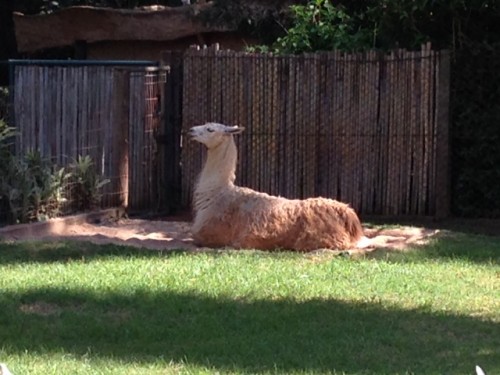
A llama at São Carlos zoo yesterday.
By Matin Durrani
If you’ve been keeping an eye on this blog, you’ll remember that I spent a week in Brazil last November gathering material for an upcoming Physics World Special Report, which will examine the challenges and opportunities facing physicists in the world’s fifth largest country. I travelled to São Paulo, São José dos Campos and Rio de Janeiro, visiting everywhere from the first overseas offshoot of the International Centre for Theoretical Physics to the Brazilian National Observatory, where Brazilian research pretty much began.
I’ve just been putting the finishing touches to that report, which includes news, features and an exclusive interview with the Brazilian science minister Marco Antonio Raupp, who is a physicist by training. Brazil’s investment in science has more than quadrupled over the last decade and in the interview Raupp outlines his priorities for the Brazilian research community. Stay tuned for the Physics World Special Report, which we’ll make available via this website from next month. (One rather flippant question we asked Raupp is who he thinks will win this year’s FIFA World Cup taking place across Brazil this summer – we didn’t have room to fit his answer into the report, but I can exclusively reveal on this blog that the Brazilian science minister has got his money on the home nation. Well, he would say that, wouldn’t he?)
Meanwhile, I received an e-mail over the weekend from my IOP Publishing colleague Susan Curtis, who’s in Brazil right now to kick off another project that will highlight some of the most exciting scientific research to emerge from the country. This time round, IOP Publishing is working in partnership with the Brazilian Materials Research Society to produce a Science Impact report focusing on materials research in areas as diverse as electronics, energy, and biology and medicine. It follows IOP Publishing’s first Science Impact report on physics in Brazil, which was published last year in partnership with the Brazilian Physical Society.
During the week, Susan will be meeting some of Brazil’s leading materials scientists to get their take on the most interesting work currently coming out of the country. Before the serious work started, though, she took the opportunity of a free Sunday afternoon in São Carlos – some 200 km northwest of São Paulo – to visit the city’s ecological park. The park boasts some exotic creatures, including brightly coloured macaws, jaguars and pumas, spectacled bears, and the rather magnificent llama picture above.
At present, the biggest scientific challenge for Brazil is to organise their vast petrochemical sector, because it will hugely finance all the buddding fields of basic research.